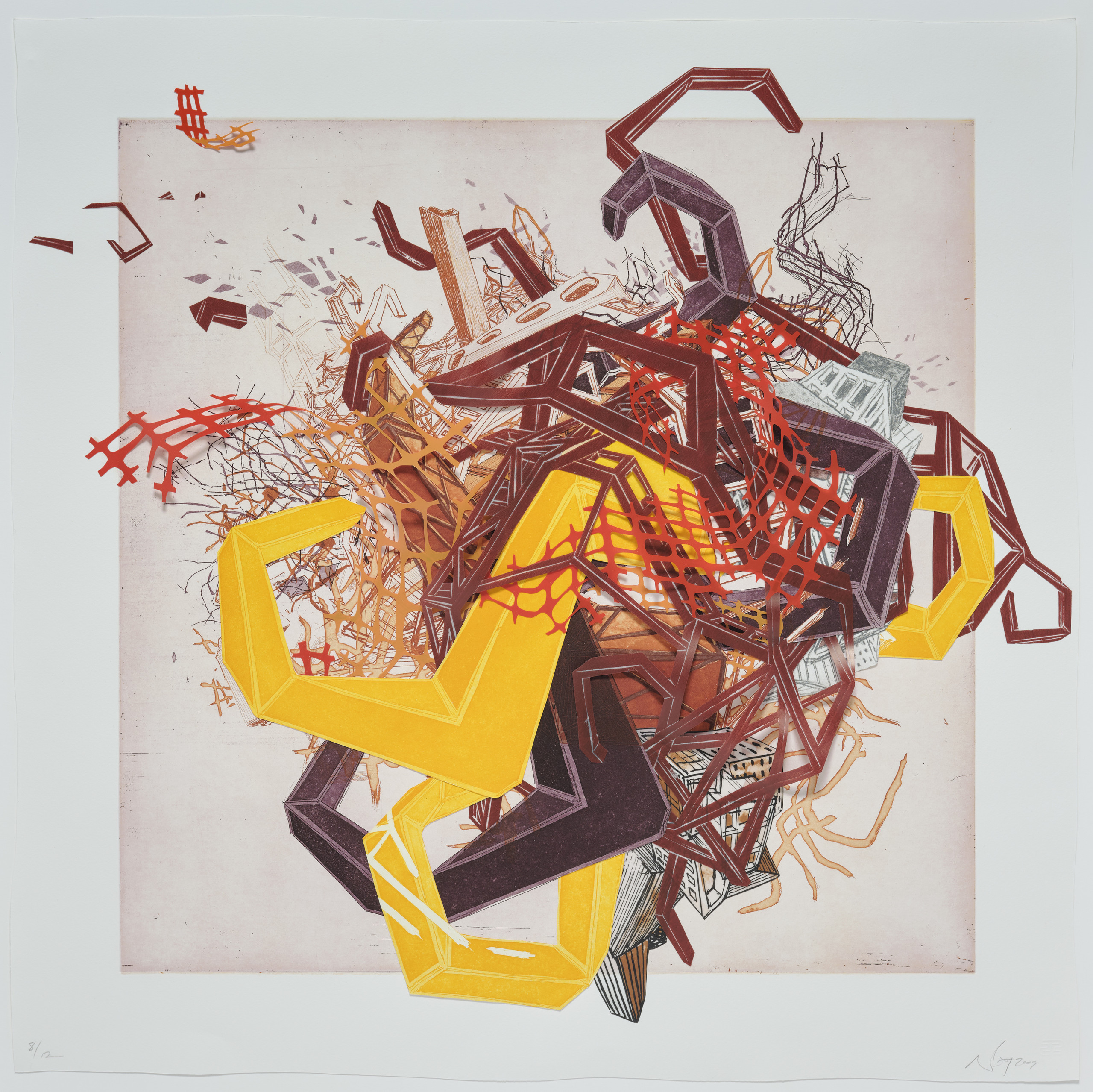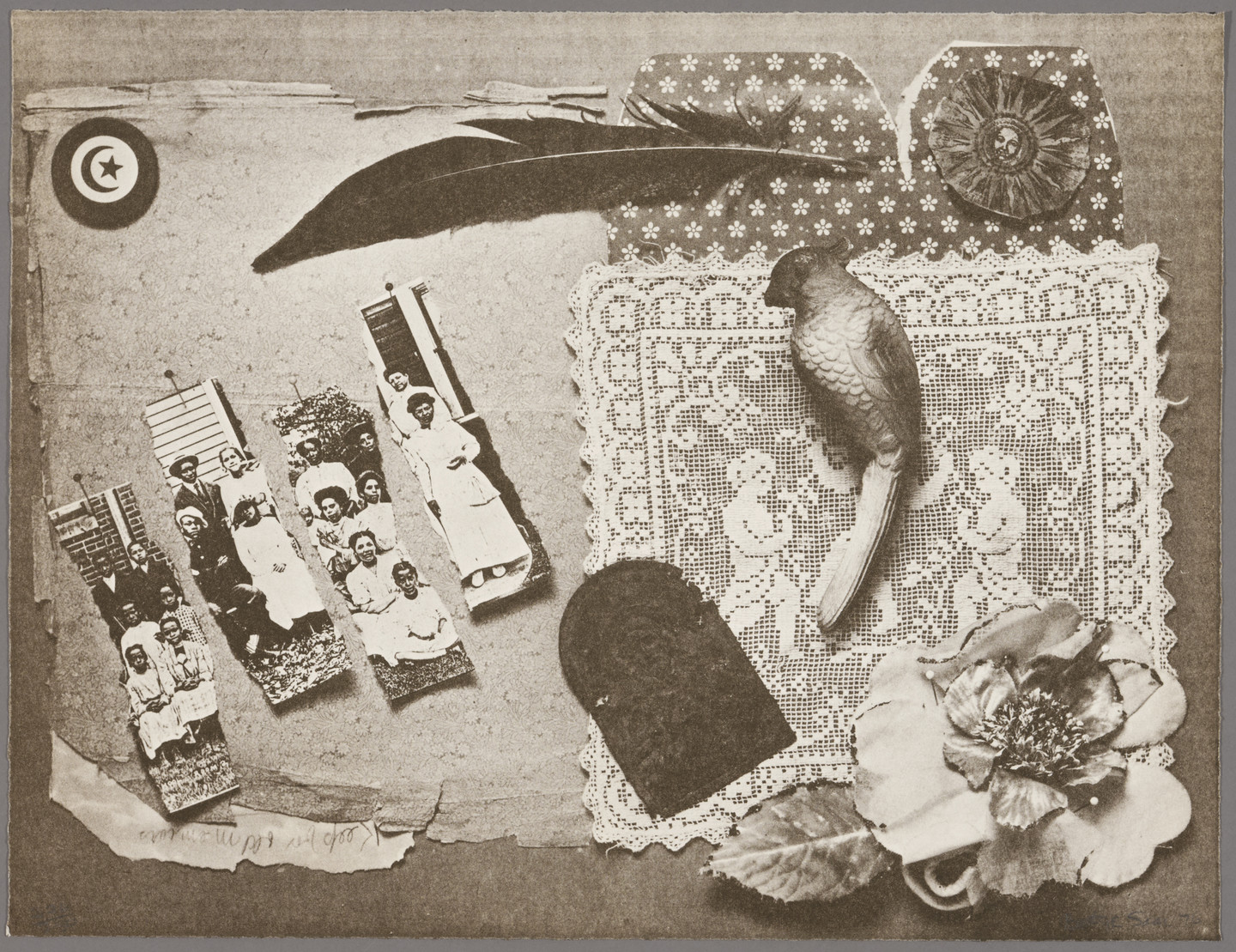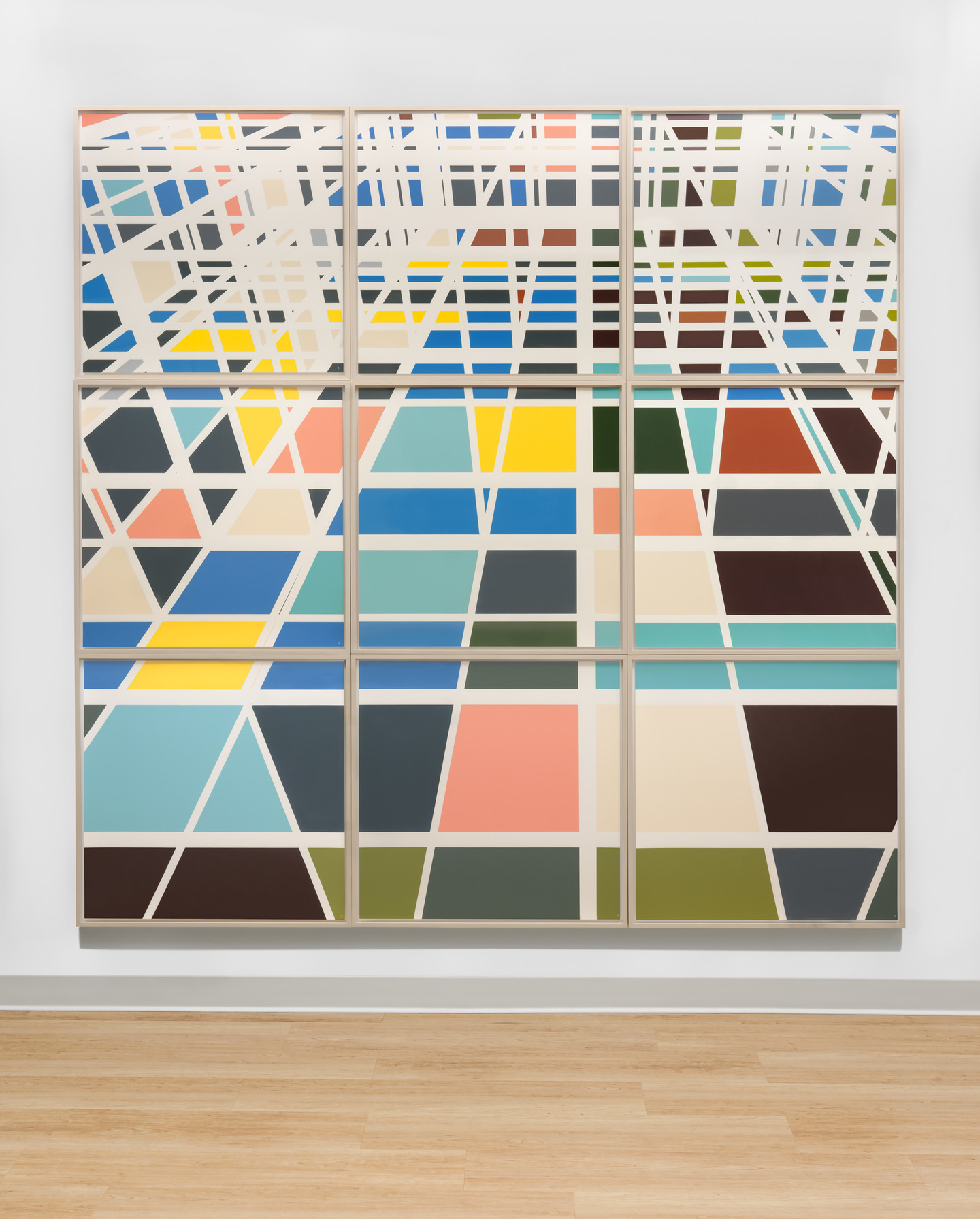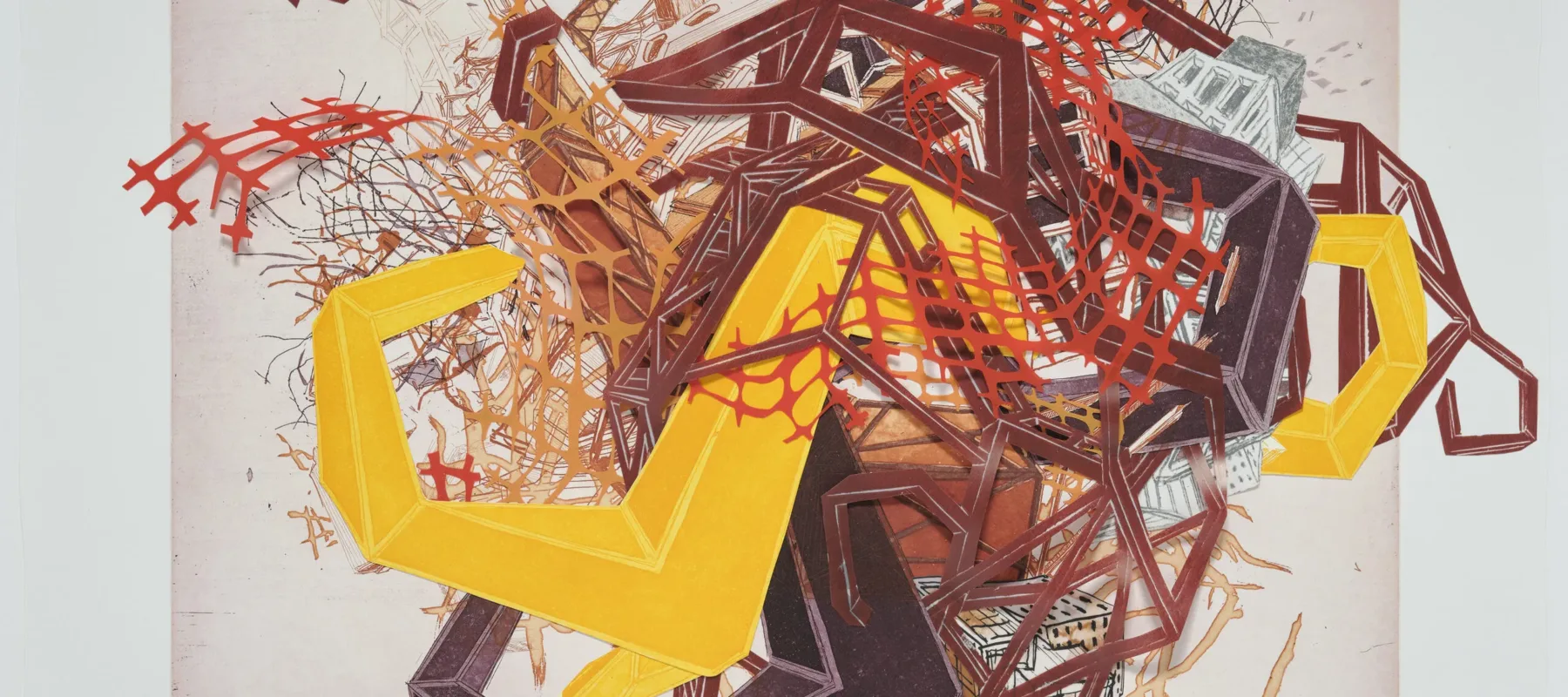WASHINGTON—The National Museum of Women in the Arts (NMWA) announces its first off-site exhibition to take place while its historic building is temporarily closed to the public for a major renovation. On view at the American University Museum at the Katzen Arts Center from January 29 through May 22, 2022, Positive Fragmentation: From the Collections of Jordan D. Schnitzer and His Family Foundation includes more than 100 works by 21 contemporary artists who use fragmentation both stylistically and conceptually. Some of the artists pull apart images and ideas to expose what lies beneath or herald the value of each part. Others assemble fragments to create a new whole defined by its components. Employing a wide range of printmaking processes, the featured artists interrogate concepts such as gender, race and the environment.

NMWA Associate Curator Virginia Treanor selected the featured works from the Collections of Jordan D. Schnitzer and His Family Foundation, one of the largest private assemblages of contemporary prints, multiples, paintings and sculptures in the United States. The exhibition title references a phrase coined in 1978 by feminist scholar and critic Lucy Lippard as she addressed gender discrimination in the division between the concepts of “high” art and “hobby” art. Lippard describes positive fragmentation, or the “collage aesthetic,” as particularly suited to historically marginalized artists, as it “willfully takes apart what is or is supposed to be and rearranges it in ways that suggest what it could be.”
“While our building is in a period of transition, we are delighted to be able to work in partnership with Jordan D. Schnitzer and His Family Foundation and the American University Museum to share with new audiences the work of some of the most important contemporary women and non-binary artists working today,” said NMWA Director Susan Fisher Sterling. “The featured artists question the status quo and suggest new perspectives.”
Although the exhibition’s theme was chosen before the global pandemic, it is apt for the world it has become. While a virus that knows no borders has underscored the interconnectedness and interdependency of the world’s population, the experience has also shattered societal infrastructures, institutions and individual lives, laying bare persistent inequalities. Exploring the impulses that drive these artists’ creative approaches through the lens of “positive fragmentation” can provide new ways of making sense of our own fractured pandemic-era world and provide inspiration for how to navigate the future.
“I have often said that artists are chroniclers of our times, and we can look to them for guidance, inspiration and motivation to create a more equitable world for all,” says Jordan D. Schnitzer. “I hope that this exhibition will advance conversations about the role these artists have had in society. Often facing discrimination from major museums, the artists do not just persevere but flourish. It is too bad that some of them are not here today to see the impact of their work and the next generation of women artists who are already some of the most important artists today.”
Selected Exhibition Themes
Making New Meaning

The work of Betye Saar (b. 1926) exemplifies the dismantling and reconstituting of myriad objects and ideas, both through her larger oeuvre as well as her singular print included in this exhibition, the lithograph Fragments (1976). Saar uses the practice of collage to critique constructs of race and gender, pose probing questions, and generate new meaning. Similarly, Wendy Red Star (b. 1981) constructs new iconographies for Indigenous American peoples through assemblages of disparate imagery, language and forms. Her powerful photo montages honor both the traditions of the past and the ingenuity of the present.
Environments

Artists in Positive Fragmentation also address the spaces we inhabit—architectural, natural and even metaphysical. Nicola López (b. 1975) and Sarah Morris (b. 1967) both distill and rearrange architectural elements, including beams, girders, sheathing and wiring, to emphasize the unseen social forces that support or destabilize our environments. Seemingly in opposition to Morris’s expansive grids, López presents isolated, self-contained globes of compacted industrial building components. With meticulous architectural plans, López presents kinetic masses of disordered elements whose frenetic energy suggests the hurried rhythms of life in cities.
Bodies
Representing the human body in art has historically been held as the highest achievement for artists. When rules for depicting the human form were challenged by artists such as Pablo Picasso and Willem de Kooning in the first half of the 20th century, the resulting fragmented forms often reduced bodies—especially women’s bodies—to sexualized elements: breasts, vaginas and buttocks. However, when women and non-binary artists fragment bodies in their work, they have a much different goal. As explored by Lippard, the dissonance of not conforming to a white cisgender-male norm, to be considered Other, is in itself a “collage experience.”
Nicole Eisenman (b. 1965) creates haunting self-portraits of composite gender-vague faces through a blend of traditional intaglio and drypoint methods with contemporary digital technology and social media filters. Elsewhere, artists use the gruesome implication of the fragmented body to convey raw emotion. In one series of works from 2005, Kara Walker (b. 1969) superimposes silhouetted dismembered hands, legs and heads of Black bodies over 19th-century etchings reproduced from an 1866 publication, Harper’s Pictorial History of the Civil War. By disrupting the view of the original, often saccharine, vignette with silhouettes of maimed Black bodies that have nothing and yet everything to do with these scenes, Walker calls attention to the violence of slavery and war.
Other artists in the exhibition include Polly Apfelbaum (b. 1955), Jennifer Bartlett (b. 1941), Christiane Baumgartner (b. 1967), Louise Bourgeois (1911–2010), Cecily Brown (b. 1969), Judy Chicago (b. 1939), Ellen Gallagher (b. 1965), Jenny Holzer (b. 1950), Julie Mehretu (b. 1970), Wangechi Mutu (b. 1972), Judy Pfaff (b. 1946), Lorna Simpson (b. 1960), Swoon (Caledonia Curry) (b. 1977), Barbara Takenaga (b. 1949) and Mickalene Thomas (b. 1971).
The show will be accompanied by a catalogue, digital content and related virtual and in-person programming.
Exhibition Sponsors
Positive Fragmentation, organized by the National Museum of Women in the Arts, is made possible through the generous support of Jordan D. Schnitzer and The Harold & Arlene Schnitzer CARE Foundation. The exhibition is presented in partnership with the American University Museum in memory of Arlene Schnitzer.
About Jordan D. Schnitzer and His Family Foundation
At age 14, Jordan D. Schnitzer bought his first work of art from his mother’s contemporary art gallery in Portland, Oregon, which evolved into his lifelong avocation as collector. He began collecting contemporary prints and multiples in earnest in 1988. Today, the collection exceeds 19,000 works and includes many of today’s most important contemporary artists. Schnitzer is also President of Harsch Investment Properties, a privately owned real estate investment company based in Portland, Oregon. For more information about the Jordan D. Schnitzer Family Foundation, please visit jordanschnitzer.org.
About the American University Museum
The American University Museum is a three-story public museum and sculpture garden located within the university’s Katzen Arts Center. The region’s largest university facility for exhibiting art, the museum has a permanent collection that highlights the donors’ holdings and AU’s Corcoran Legacy Collection, Watkins Collection and Rothfeld Collection. Rotating exhibitions emphasize regional, national and international contemporary art. The Katzen Arts Center, named for Washington-area benefactors Dr. and Mrs. Cyrus Katzen, brings all the visual and performing arts programs at AU into one space. Designed to foster interdisciplinary collaboration in the arts, the Katzen includes the museum, the Abramson Family Recital Hall, the Studio Theatre, a dance studio, an electronics studio, artists’ studios, rehearsal space and classrooms. The museum’s current hours are Friday–Sunday only, 11 a.m.–4 p.m. Please visit https://www.american.edu/cas/museum/ for up-to-date visitor information.
National Museum of Women in the Arts
The National Museum of Women in the Arts (NMWA) is the first museum in the world solely dedicated to championing women through the arts. With its collections, exhibitions, programs and online content, the museum inspires dynamic exchanges about art and ideas. NMWA advocates for better representation of women artists and serves as a vital center for thought leadership, community engagement and social change. NMWA addresses the gender imbalance in the presentation of art by bringing to light important women artists of the past while promoting great women artists working today. The collections highlight painting, sculpture, photography and video by artists including Louise Bourgeois, Mary Cassatt, Judy Chicago, Frida Kahlo, Shirin Neshat, Faith Ringgold, Pipilotti Rist, Amy Sherald and Élisabeth Louise Vigée-LeBrun.
The museum building is closed for a major renovation, with plans to reopen in fall 2023. Visit nmwa.org/renovation for more information. During the building closure, NMWA continues its mission-based work and engages supporters and friends through a dynamic slate of online programs and events, off-site and virtual exhibitions, and digital content. For information, call 202-783-5000, visit nmwa.org, Broad Strokes blog, Facebook, Twitter or Instagram.
Media Contact
For questions related NMWA and exhibition content: Amy Mannarino, amannarino@nmwa.org, (202) 783-7373
For questions related to the American University Museum: Rebecca Basu, basu@american.edu, (o) 202-885-5978, (m) 202-486-9296
Additional images available upon request.

